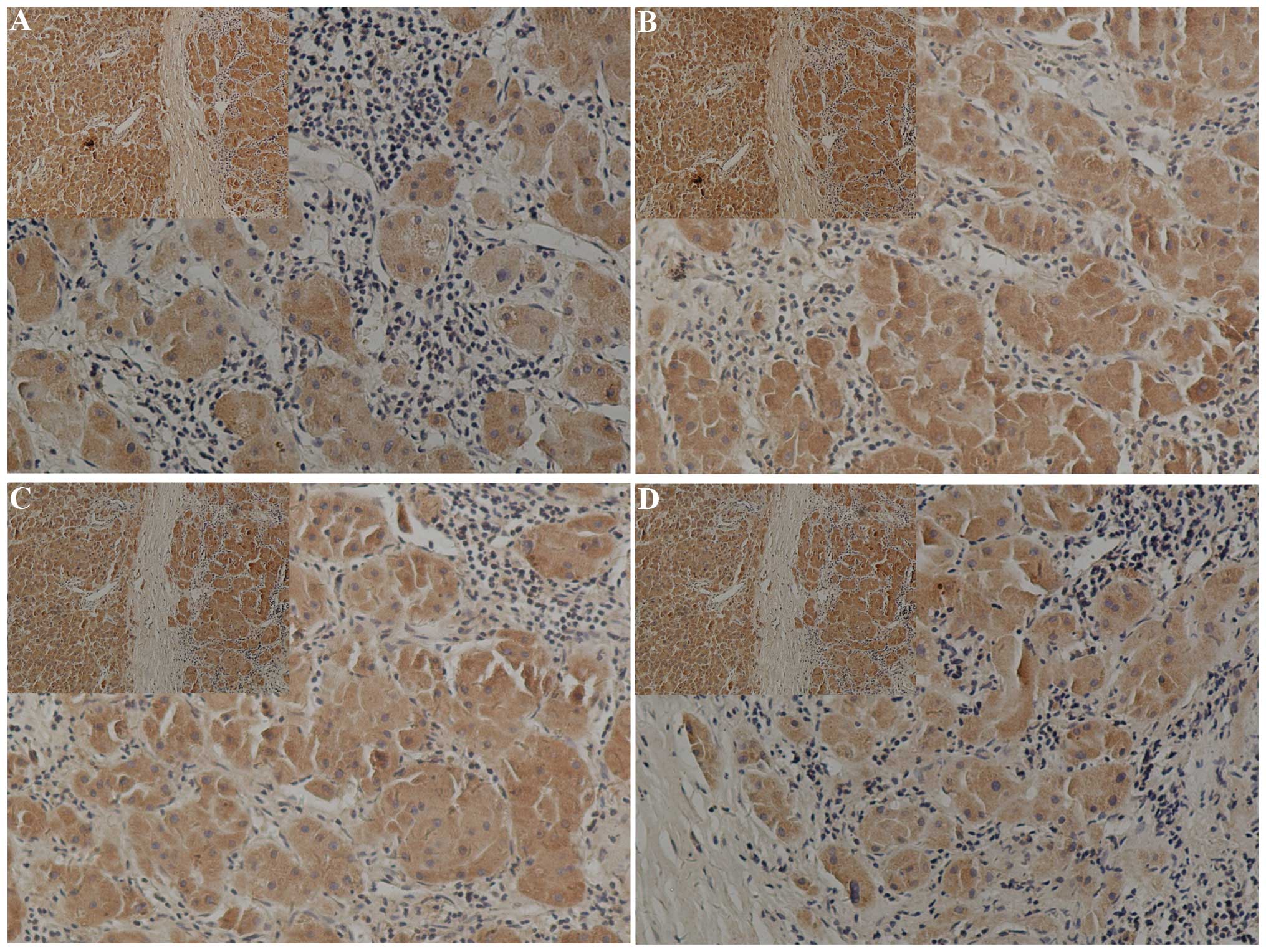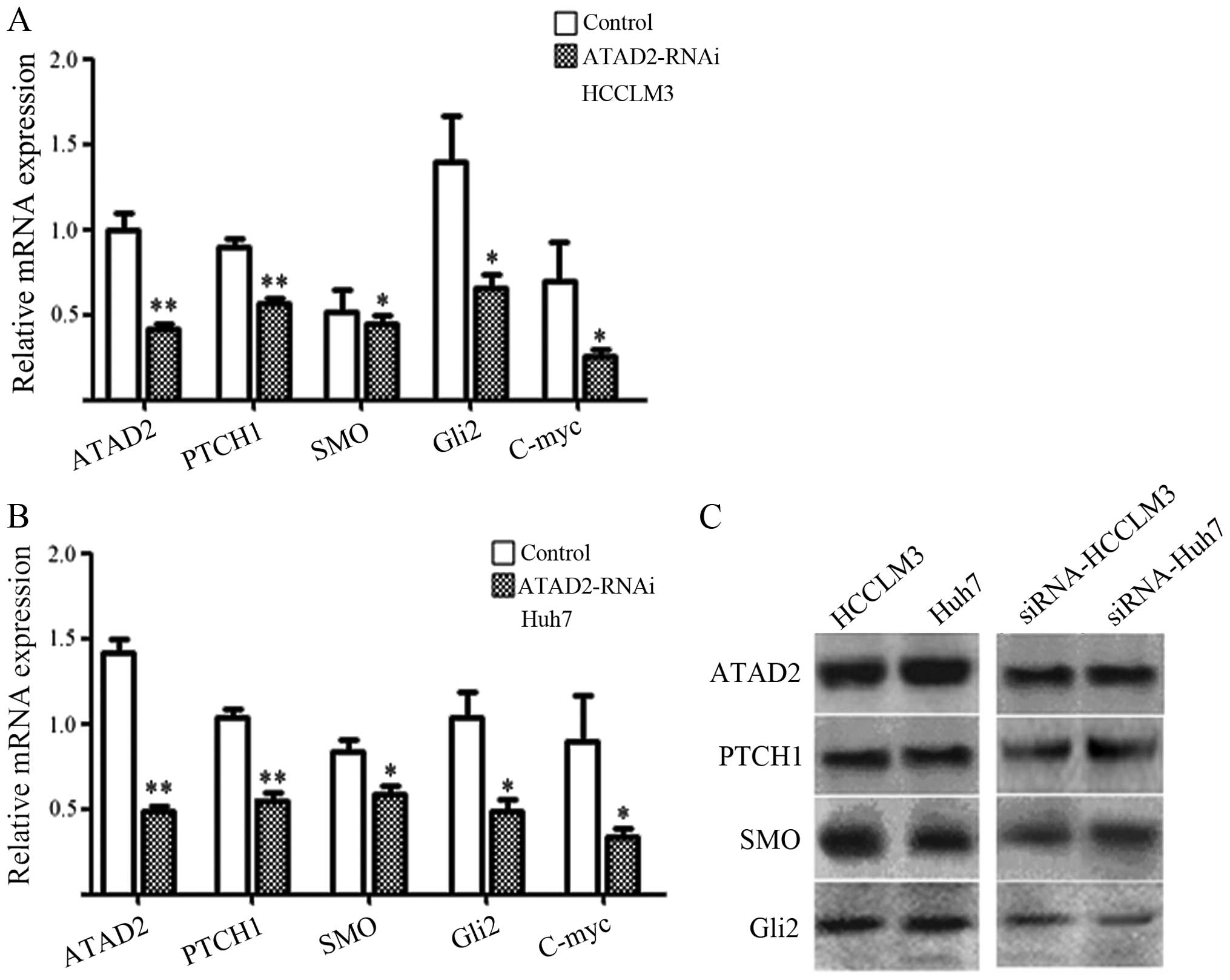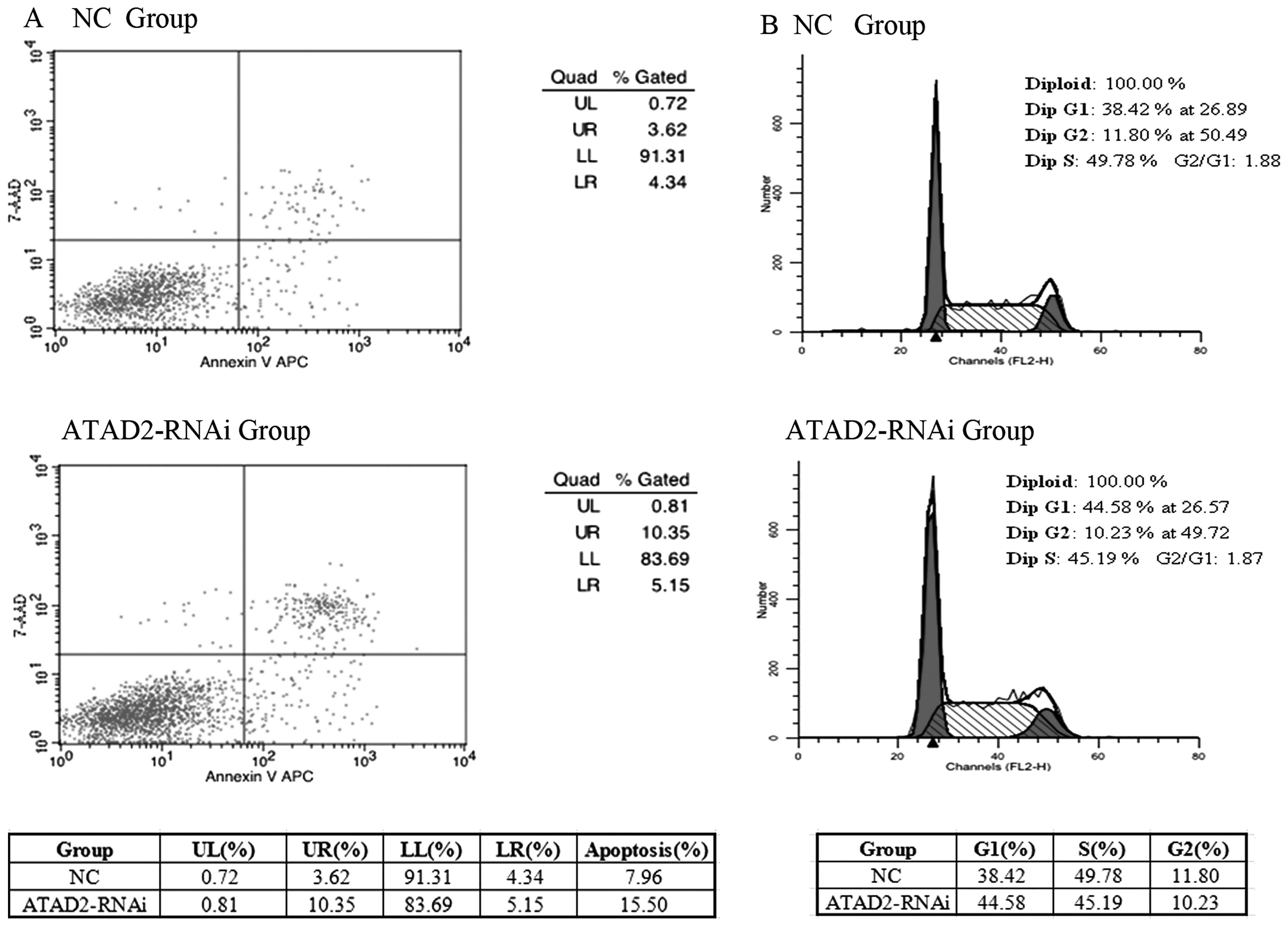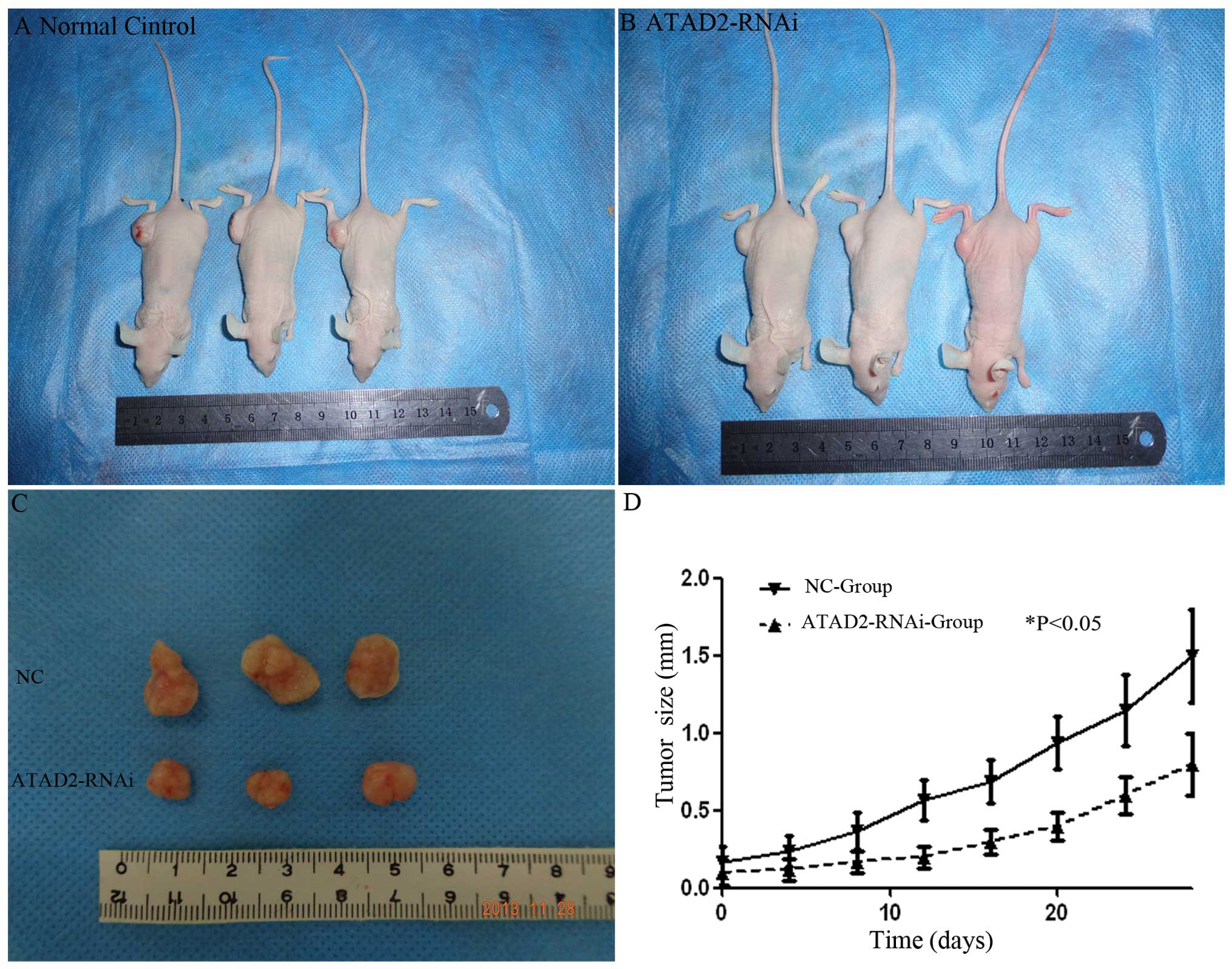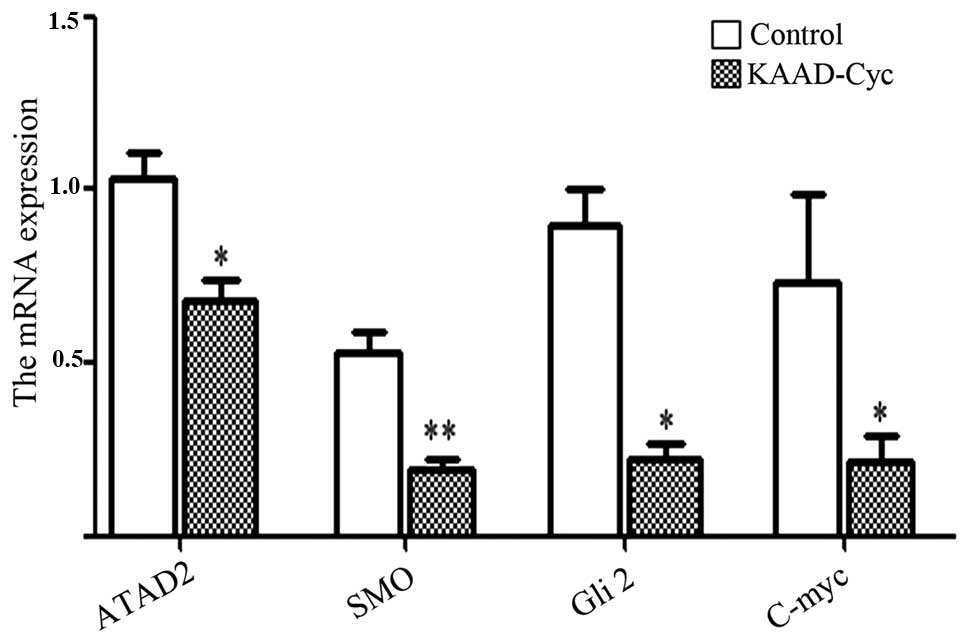|
1.
|
But DY, Lai CL and Yuen MF: Natural
history of hepatitis-related hepatocellular carcinoma. World J
Gastroenterol. 14:1652–1656. 2008. View Article : Google Scholar : PubMed/NCBI
|
|
2.
|
Chen HW, et al: Expression of FOXJ1 in
hepatocellular carcinoma: Correlation with patients’ prognosis and
tumor cell proliferation. Mol Carcinog. 52:647–659. 2013.PubMed/NCBI
|
|
3.
|
He H, Wu G, Li W, Cao Y and Liu Y: CIP2A
is highly expressed in hepatocellular carcinoma and predicts poor
prognosis. Diagn Mol Pathol. 21:143–149. 2012. View Article : Google Scholar : PubMed/NCBI
|
|
4.
|
Block TM, Mehta AS, Fimmel CJ and Jordan
R: Molecular viral oncology of hepatocellular carcinoma. Oncogene.
22:5093–5107. 2003. View Article : Google Scholar : PubMed/NCBI
|
|
5.
|
Feng JT, Shang S and Beretta L: Proteomics
for the early detection and treatment of hepatocellular carcinoma.
Oncogene. 25:3810–3817. 2006. View Article : Google Scholar
|
|
6.
|
Zou JX, Revenko AS, Li LB, et al: ANCCA,
an estrogen-regulated AAA+ ATPase coactivator for ERalpha, is
required for coregulator occupancy and chromatin modification. Proc
Natl Acad Sci USA. 104:18067–18072. 2007.PubMed/NCBI
|
|
7.
|
Ciró M, Prosperini E, Quarto M, et al:
ATAD2 is a novel cofactor for MYC, overexpressed and amplified in
aggressive tumors. Cancer Res. 69:8491–8498. 2009.PubMed/NCBI
|
|
8.
|
Alizadeh AA, Eisen MB, Davis RE, et al:
Distinct types of diffuse large B-cell lymphoma identified by gene
expression profiling. Nature. 403:503–511. 2000. View Article : Google Scholar : PubMed/NCBI
|
|
9.
|
Chen X, Cheung ST, So S, et al: Gene
expression patterns in human liver cancers. Mol Biol Cell.
13:1929–1939. 2002. View Article : Google Scholar PubMed/NCBI
|
|
10.
|
Ma XJ, Salunga R, Tuggle JT, et al: Gene
expression profiles of human breast cancer progression. Proc Natl
Acad Sci USA. 100:5974–5979. 2003. View Article : Google Scholar : PubMed/NCBI
|
|
11.
|
Huang Q, Lin B, Liu H, et al: RNA-Seq
analyses generate comprehensive transcriptomic landscape and reveal
complex transcript patterns in hepatocellular carcinoma. PLoS One.
6:e261682011. View Article : Google Scholar
|
|
12.
|
Cheng WT, Xu K, Tian DY, et al: Role of
Hedgehog signaling pathway in proliferation and invasiveness of
hepatocellular carcinoma cells. Int J Oncol. 34:829–836.
2009.PubMed/NCBI
|
|
13.
|
Sicklick JK, Li YX, Jayaraman A, et al:
Dysregulation of the hedgehog pathway in human
hepatocarcinogenesis. Carcinogenesis. 27:748–757. 2006. View Article : Google Scholar : PubMed/NCBI
|
|
14.
|
Patil MA, Zhang J, Ho C, et al: Hedgehog
signaling in human hepatocellular carcinoma. Cancer Biol Ther.
5:111–117. 2006. View Article : Google Scholar : PubMed/NCBI
|
|
15.
|
Ruiz i Altaba A, Sánchez P and Dahmane N:
Gli and hedgehog in cancer: tumours, embryos and stem cells. Nat
Rev Cancer. 2:361–372. 2002.PubMed/NCBI
|
|
16.
|
Ingham PW and McMahon AP: Hedgehog
signaling in animal development: paradigms and principles. Genes
Dev. 15:3059–3087. 2001. View Article : Google Scholar : PubMed/NCBI
|
|
17.
|
Cohen MM Jr: The Hedgehog signaling
network. Am J Med Genet A. 123A:5–28. 2003. View Article : Google Scholar : PubMed/NCBI
|
|
18.
|
Wu G, Liu H, He H, Wang Y, Lu X, et al:
miR-372 down-regulates the oncogene ATAD2 to influence
hepatocellular carcinoma proliferation and metastasis. BMC Cancer.
14:1072014. View Article : Google Scholar : PubMed/NCBI
|
|
19.
|
Pivot-Pajot C, Caron C, Govin J, et al:
Acetylation-dependent chromatin reorganization by BRDT, a
testis-specific bromo-domain-containing protein. Mol Cell Biol.
23:5354–5365. 2003. View Article : Google Scholar : PubMed/NCBI
|
|
20.
|
Filippakopoulos P, Picaud S, Mangos M, et
al: Histone recognition and large-scale structural analysis of the
human bromodomain family. Cell. 149:214–231. 2012. View Article : Google Scholar : PubMed/NCBI
|
|
21.
|
Caron C, Lestrat C, Marsal S, et al:
Functional characterization of ATAD2 as a new cancer/testis factor
and a predictor of poor prognosis in breast and lung cancers.
Oncogene. 29:5171–5181. 2010. View Article : Google Scholar : PubMed/NCBI
|
|
22.
|
Seoane J, Pouponnot C, Staller P, Schader
M, Eilers M, et al: TGFbeta influences Myc, Miz-1 and Smad to
control the CDK inhibitor p15INK4b. Nat Cell Biol. 3:400–408. 2001.
View Article : Google Scholar : PubMed/NCBI
|
|
23.
|
Leachman NT, Brellier F, Ferralli J, et
al: ATAD2B is a phylogenetically conserved nuclear protein
expressed during neuronal differentiation and tumorigenesis. Dev
Growth Differ. 52:747–755. 2010. View Article : Google Scholar : PubMed/NCBI
|
|
24.
|
Lu J, Chen M, Ren XR, et al: Regulation of
Hedgehog signaling by Myc-interacting zinc finger protein 1, Miz1.
PLoS One. 8:e633532013. View Article : Google Scholar : PubMed/NCBI
|
|
25.
|
Peukert K, Staller P, Schneider A, et al:
An alternative pathway for gene regulation by Myc. EMBO J.
16:5672–5686. 1997. View Article : Google Scholar : PubMed/NCBI
|
|
26.
|
Wanzel M, Herold S and Eilers M:
Transcriptional repression by Myc. Trends Cell Biol. 13:146–150.
2003. View Article : Google Scholar : PubMed/NCBI
|
|
27.
|
Patel JH and McMahon SB: BCL2 is a
downstream effector of MIZ-1 essential for blocking c-MYC-induced
apoptosis. J Biol Chem. 282:5–13. 2007. View Article : Google Scholar : PubMed/NCBI
|
|
28.
|
Rao G, Pedone CA, Coffin CM, Holland EC
and Fults DW: c-Myc enhances sonic hedgehog-induced medulloblastoma
formation from nestin-expressing neural progenitors in mice.
Neoplasia. 5:198–204. 2003. View Article : Google Scholar : PubMed/NCBI
|
|
29.
|
Wang Y, Wu MC, Sham JS, et al: Prognostic
significance of c-myc and AIB1 amplification in hepatocellular
carcinoma. A broad survey using high-throughput tissue microarray.
Cancer. 95:2346–2352. 2002. View Article : Google Scholar : PubMed/NCBI
|
|
30.
|
Shachaf CM, Kopelman AM, Arvanitis C, et
al: MYC inactivation uncovers pluripotent differentiation and
tumour dormancy in hepatocellular cancer. Nature. 431:1112–1117.
2004. View Article : Google Scholar : PubMed/NCBI
|
















